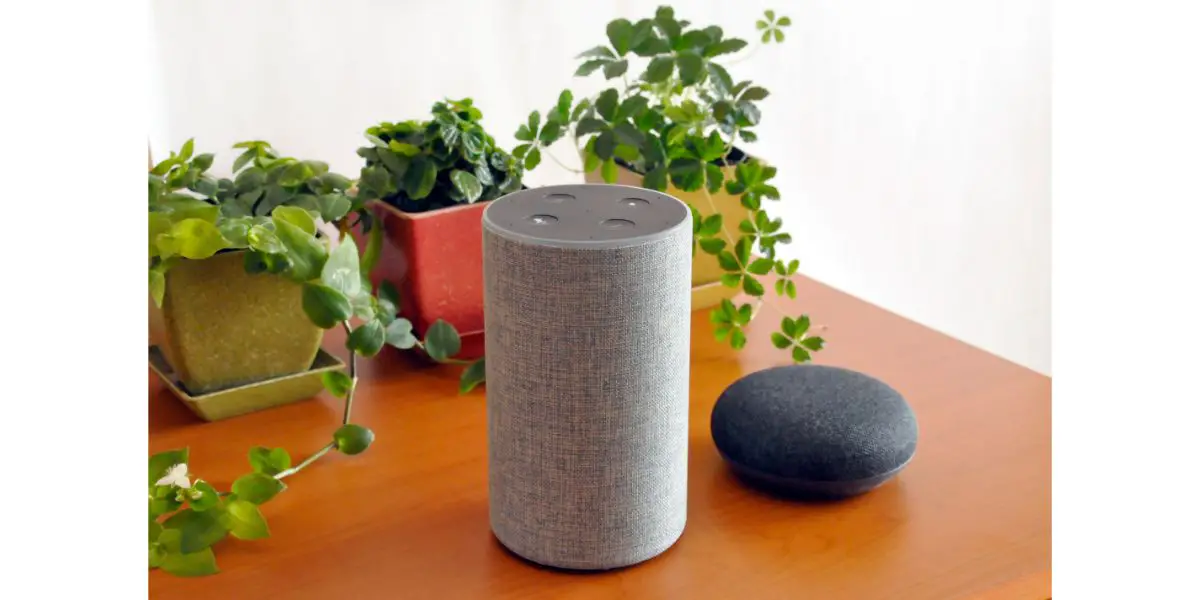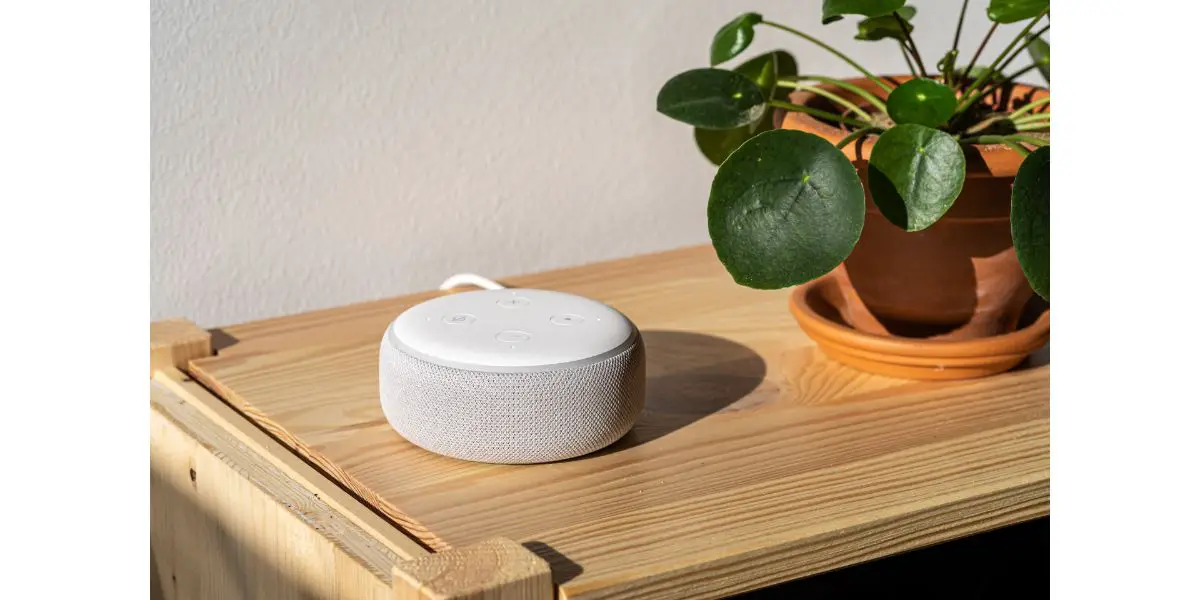Disclaimer: This post may contain affiliate links, meaning we get a small commission if you make a purchase through our links, at no cost to you. For more information, please visit our Disclaimer Page.
There’s no doubt about it, smart home technology has made our lives more comfortable and convenient. For example, Amazon Echo is an assistive technology that’s equipped with Alexa, an AI who uses Natural Language Processing (NPL) to power your world.
She can stream your favorite music, control networked home appliances, and even make recommendations for food or entertainment based on your preferences. Want to hear a joke or find out if it’s going to rain tomorrow? Alexa can do that, too.
But, where do you turn when you request your trusted home assistant and she replies “Sorry, something went wrong,”?
Don’t panic! It’s usually a minor problem that’s easily fixed.
Table of Contents
Why Alexa is Saying Something Went Wrong (and 9 Possible Solutions)
Wonderful as tech is, it can sometimes be glitchy and erratic. Since Amazon Echo has been around for a few years and evolved through multiple generations, developers and end users have the benefit of experience with common issues.
If you’re receiving the “Sorry, something went wrong” error message, it could be due to one of several causes.
Here are a few of the most common.
- Internet connectivity issues: Alexa is connected to Amazon Cloud Services. That means when your internet connection is down, so is your digital assistant.
- Out of date app or device software: Amazon Echo has been around for a few years now. If your device is older or you haven’t enabled automatic updates, the software may also be outdated.
- Improper device setup: Misconfiguration or setting up the device in a bad location could interfere with performance.
- Temporary server issues: Popular services can sometimes lead to system overload. Your Alexa error message could be due to the server being down or temporarily overloaded due to heavy traffic.
For every problem, there is nearly always a solution. In many cases, it’s as simple as turning your device on and then powering it up again. Make sure all hubs are turned off, wait one minute, and power them back up again.
If that doesn’t work, you can always try one of these fixes.
1. Check the internet connection to ensure that the device is connected to a stable network. Those who live in remote areas or have unstable connectivity often experience temporary service disruptions and insecure connections. Check that your connection is solid if you’re having intermittent network problems.
2. Update the Alexa app and device software to the latest version. When the problem is an older version of Alexa or outdated device software, you have two options: upgrading to a newer device or updating the software. The latter usually only takes a few minutes.
3. Try the command again later in case of a temporary server issue. If it’s simply a matter of the server being down or overloaded, you can always try again later. Sometimes it only takes a few minutes for traffic to begin flowing smoothly again.
4. Force-close the Alexa app. Force-closing the app is another possible fix if your Alexa seems stuck. Simply go to the app settings on your smartphone, locate the Alexa or Amazon Echo app, and choose the “Force stop” option. Wait about 30 seconds, and them enable the app again.
5. Delete the skill causing the issue and re-enable it.
Occasionally, there is an issue with a particular skill. For example, a few years ago the TP-Link Kasa Skill caused widespread issues for Alexa users in the US and UK. In most cases, disabling and re-enabling the skill fixed the problem.
6. Make sure the device is not too far from the router. Although WiFi signals can register even outside your home, the signal becomes weaker. You could also run into problems if there are too many devices on your network. Try moving your Echo or hubs closer to your router.
7. Ensure the device has enough power. Busy households sometimes mean loose connections or disconnected power cords. Although Alexa is a wireless device, your router and other networked devices may not be. Check all of your connections to make sure that everything is plugged in fully and working, and that all cords are free from damage.
8. Check if the device is registered to the correct Amazon account. Your Alexa and other Amazon-networked devices will only work if connected to the account you used when you purchased and installed these items. If you close your account or have multiple accounts, ensure you’re signed in to the account associated with your Echo.
9. When all else fails, contact Amazon. Amazon has excellent and very responsive customer care. If all else fails and you can’t find the source of your problem, contact customer support for further assistance.
Ensuring Proper Installation of Your Amazon Echo
The best way to ensure that your Amazon Echo and hubs are working at optimal performance levels is to ensure that they’re properly configured and setup in the first place. Follow this five-step setup process and you should be good to go.
- Plug in the device and connect it to a power source.
- Download the Amazon Alexa app to your smartphone or tablet.
- Open the app and sign in to your Amazon account (or create one if you don’t have one).
- Follow the on-screen instructions to connect the Echo device to your Wi-Fi network.
- Once connected, you can start using your Echo device by saying “Alexa” followed by a command.
Keep your system updated by enabling automatic updates. This will ensure that all patches and system upgrades are installed as soon as they’re available.
Keeping Alexa (and Your Home) Safe
It’s not enough to ensure that your Echo and hubs are properly connected and configured. Because these devices are part of an IoT smart home network, they are also vulnerable to attacks and hacking exploits.
You can ensure that your system is functional and secure by taking these precautions each time you install a new device or network.
The very first thing you should do is get rid of the Amazon default password and choose a new one. Make sure that it’s a strong, alpha-numeric password that isn’t easy to guess, but that it’s not so difficult that you can’t remember it. Do the same with your WiFi password and enable WPA3 encryption if possible.
Next, you should review the security settings for your Alexa app. This is the best away to control access to your network and devices. It also limits what information you share and with whom. Review your Alexa history regularly and delete any recordings you don’t need any more.
Keep your Echo device software up-to-date to ensure you have the latest security patches. It’s also important to use a PIN number or voice command to confirm purchases made through Alexa or when transmitting sensitive data, such as personal identifiers or banking information.
Several security features and best practices will keep your data private and safeguard your home. The device location feature can be convenient, but it should be disabled when you don’t need it. There is also a “Drop in” function that’s pretty handy, but it should only be sued with contacts you trust.
If you’re going to be away from home for a short time, you can enable the “Alexa Guard” feature to monitor your home while you’re gone. However, you should unplug your device completely when it’s not in use or you’re going to be away for an extended time.
Final Thoughts
Smart home assistants like Alexa bring that skills that make our lives much more accessible, pleasant, and efficient. In fact, many people come to depend on their
If you want ensure hassle-free usage and optimal enjoyment, proper installation and a little troubleshooting know-how will go a long way.


